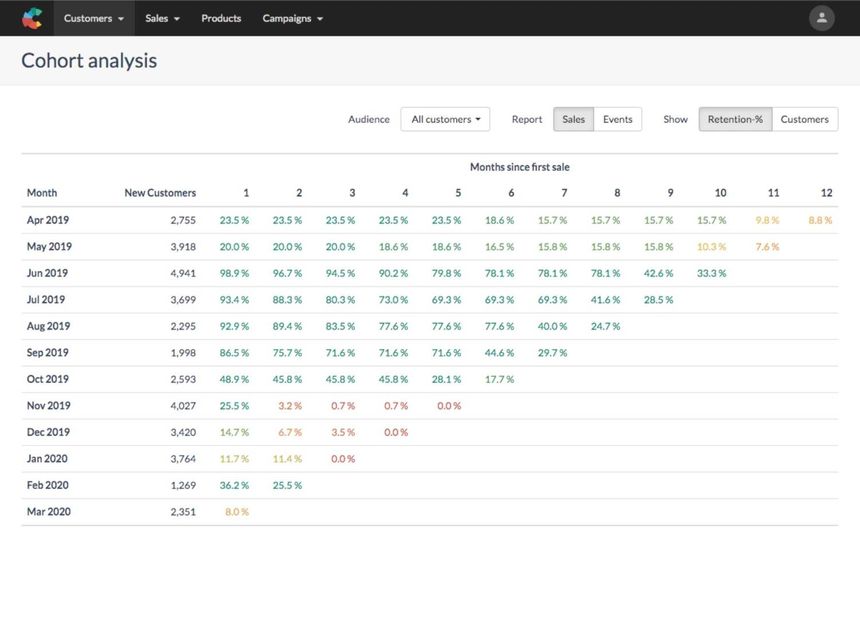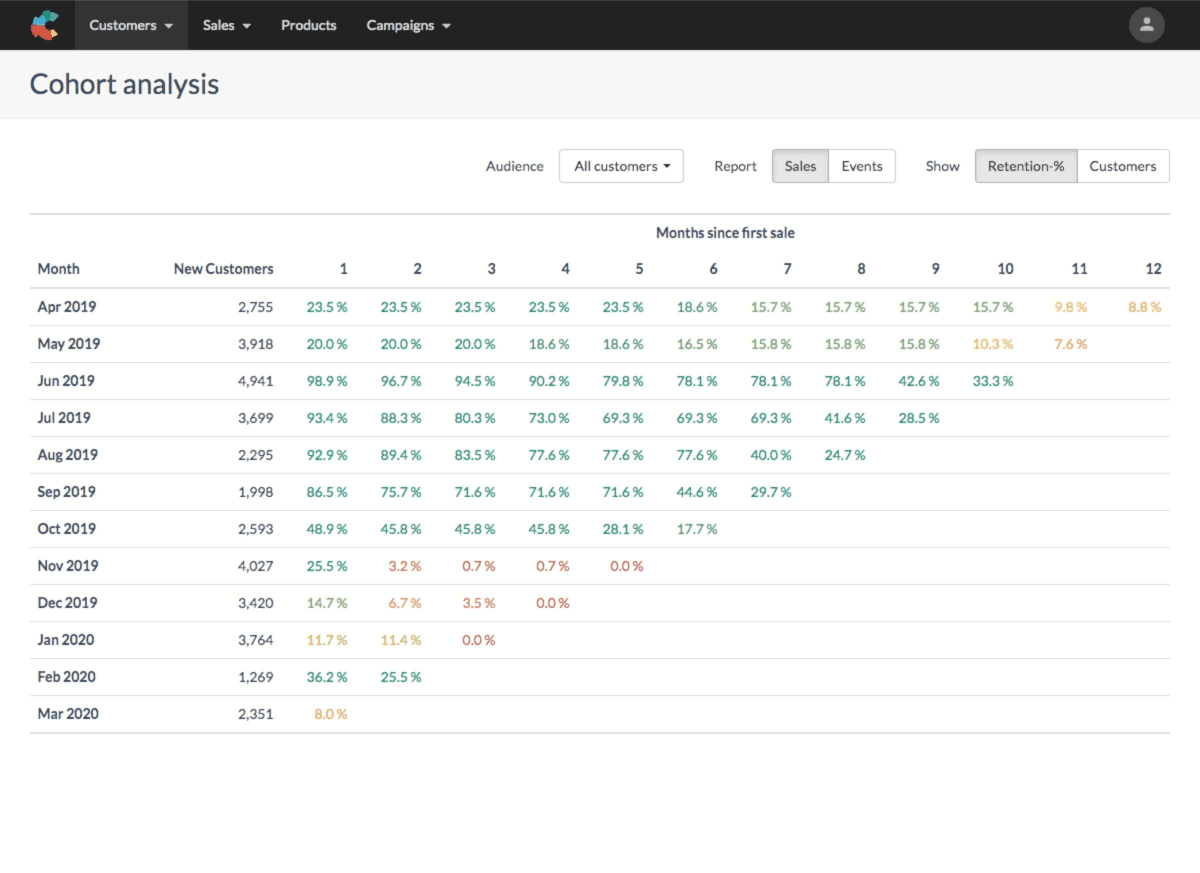Blog
Cohort Analysis - The best tool for tracking customer retention
April 23, 2020 Data-driven customer journey

When a new customer is acquired, it is important for business to follow if the one time buyer will return to shop again or not. Cohort analysis enables tracking the customer behaviour and analysing churn.
We all know that getting new customers is vital to keep the business growing. What’s equally important is retaining the customers you already have acquired by using your valuable time and resources. But to improve your customer retention, you need to know how to measure it. Meet the cohort analysis! We’ll go through what the cohort is all about and how you can use it to improve customer experience and sales.
What is a cohort analysis?
Cohort analysis is the best way to track customer retention. It shows you how many customers are left at the end of each month after they initially purchased from you or were active in another way, for example, signed up for your loyalty program. In other words, it’s a tool you can use to observe and measure the behaviour of your customers over time.
How to read the cohorts?
Depending on the purpose you are using the cohort for (e.g. tracking sales, loyalty program or other sign-ups), the list on the left-hand side tells you how many customers performed a particular action in a specific month for the first time. If we are tracking sales for example, in the picture above, you can see that in April 2755 new customers bought a product. In six months, 18.6% of the customers were returning customers, meaning that they had bought another product after the first purchase during the 6th month or after that.
What’s the benefit of analysing customer behaviour?
Customer retention tracking & analysis
Good customer retention is a critical success factor. It is more cost-effective to take care of the ones who already trust you i.e. your current customers than attract new ones with big marketing budgets. You already have data-based knowledge about your customers, which makes them less costly to serve. Loyal customers are also less likely to turn to your competitors.
The cohort analysis helps you to analyse the behaviour of your customers and act at the right time. You can act based on facts, not guesses. Is there a specific time after you start losing your customers? What can you do better at that pain point to keep them?
Cohort analysis shows the long term effects of particular marketing campaigns
With the cohort analysis, you can track whether your marketing campaigns are worth the money in the long run. If you as a marketer have wondered how to show the long term effects of one marketing campaign, cohort analysis is for you.
For example, if you have a Black Friday campaign and promote a loss leader (a product sold at loss to attract new customers), the campaign might first cause you more costs than profits. However, with the cohort analysis, you can track whether these customers from the Black Friday campaign will buy from you also in the future. Using Custobar audiences you can compare different campaigns with each other and see which campaign brought you more loyal customers.
To sum it up, cohort analysis is a tool that helps you to experiment with your campaigns and find what works best for you. It will help to prove the effectiveness of your marketing campaigns. In user guides you can learn more about how to use the cohort analysis tool in Custobar.
If you are interested in more ways of measuring and analysing your customer base, read more about the RFM matrix. The RFM acronym stands for “recency,” “frequency,” and “monetary value,”. The RFM tool tells you who your most valuable customers are and who you are most likely to lose.

